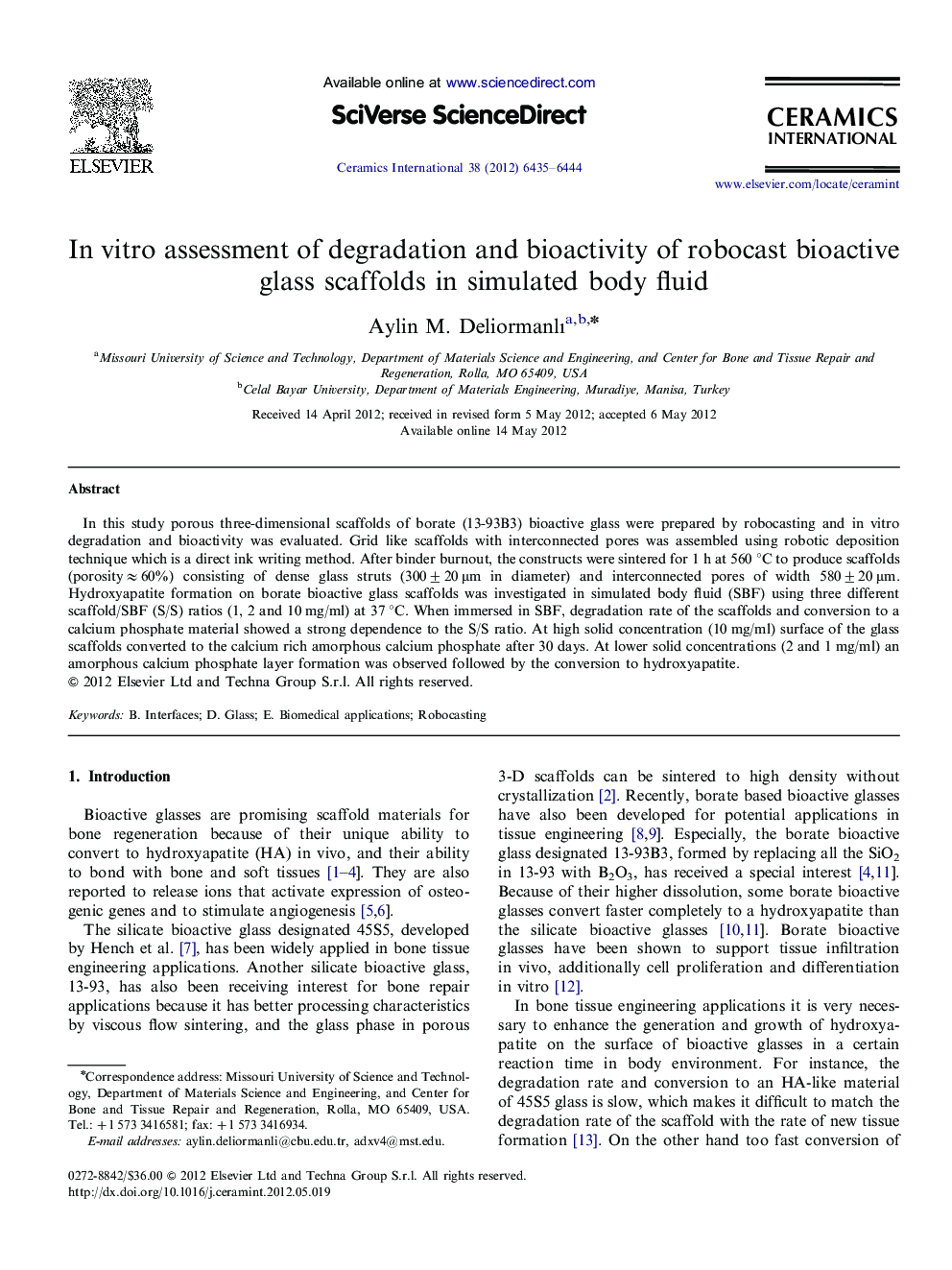| Article ID | Journal | Published Year | Pages | File Type |
|---|---|---|---|---|
| 1462413 | Ceramics International | 2012 | 10 Pages |
In this study porous three-dimensional scaffolds of borate (13-93B3) bioactive glass were prepared by robocasting and in vitro degradation and bioactivity was evaluated. Grid like scaffolds with interconnected pores was assembled using robotic deposition technique which is a direct ink writing method. After binder burnout, the constructs were sintered for 1 h at 560 °C to produce scaffolds (porosity≈60%) consisting of dense glass struts (300±20 μm in diameter) and interconnected pores of width 580±20 μm. Hydroxyapatite formation on borate bioactive glass scaffolds was investigated in simulated body fluid (SBF) using three different scaffold/SBF (S/S) ratios (1, 2 and 10 mg/ml) at 37 °C. When immersed in SBF, degradation rate of the scaffolds and conversion to a calcium phosphate material showed a strong dependence to the S/S ratio. At high solid concentration (10 mg/ml) surface of the glass scaffolds converted to the calcium rich amorphous calcium phosphate after 30 days. At lower solid concentrations (2 and 1 mg/ml) an amorphous calcium phosphate layer formation was observed followed by the conversion to hydroxyapatite.
